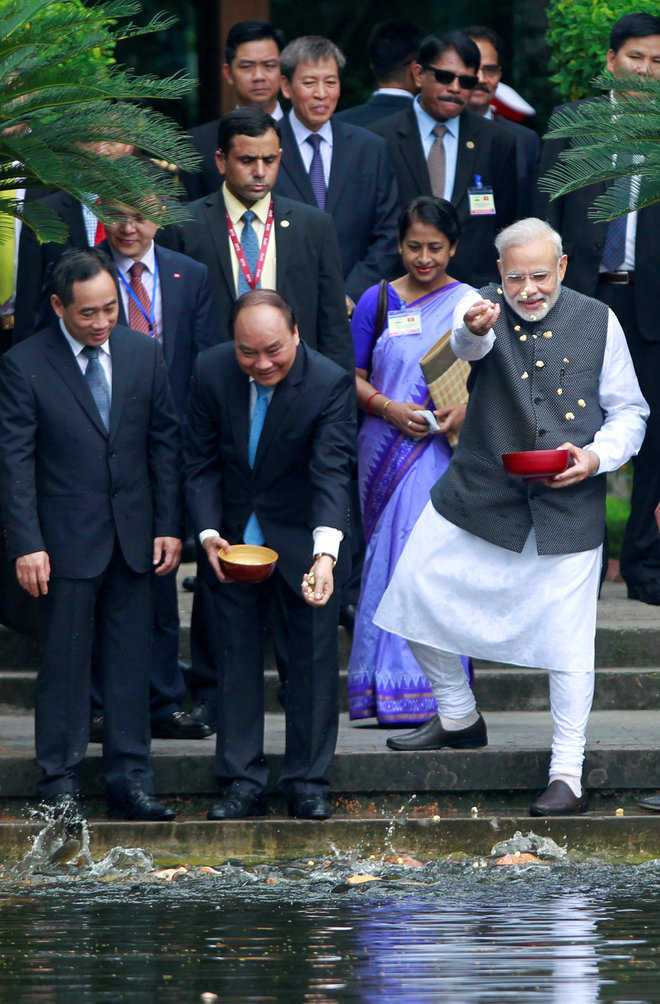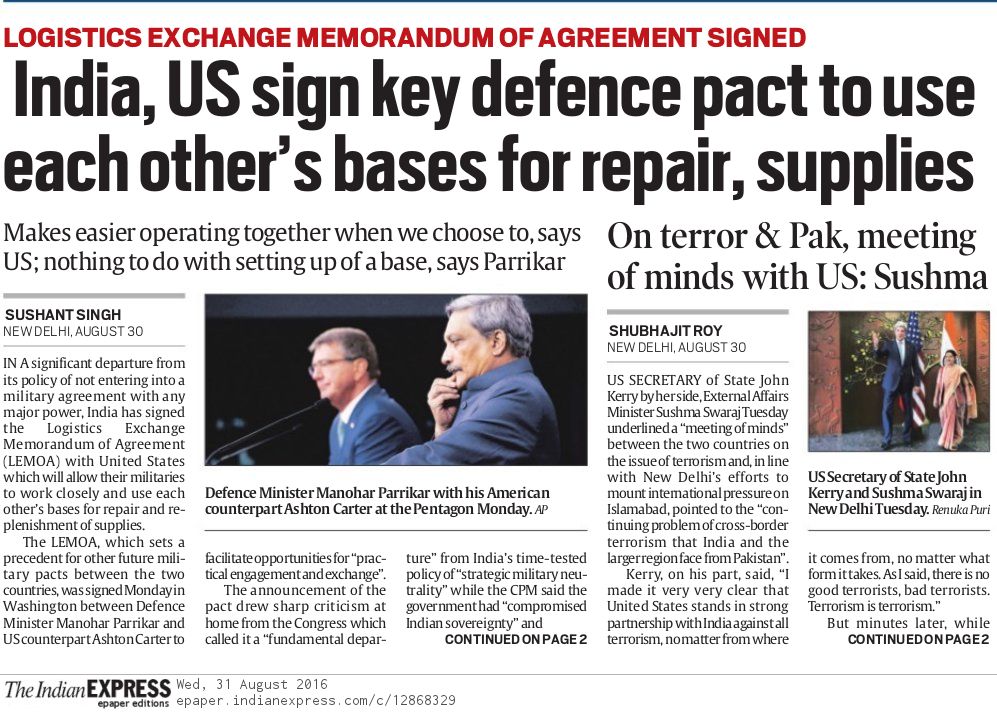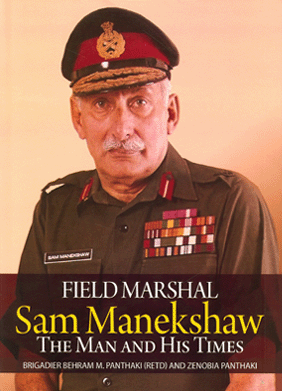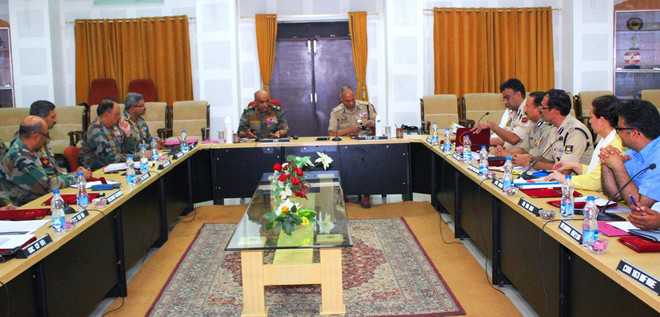Despite the influence of radical Islam and the antipathy of the Kashmiri youth towards everything Indian, a positive that remains is that radical religious fervour has not travelled the full distance. It is existent, yet is different from that of the Taliban, TTP or Daesh variety.
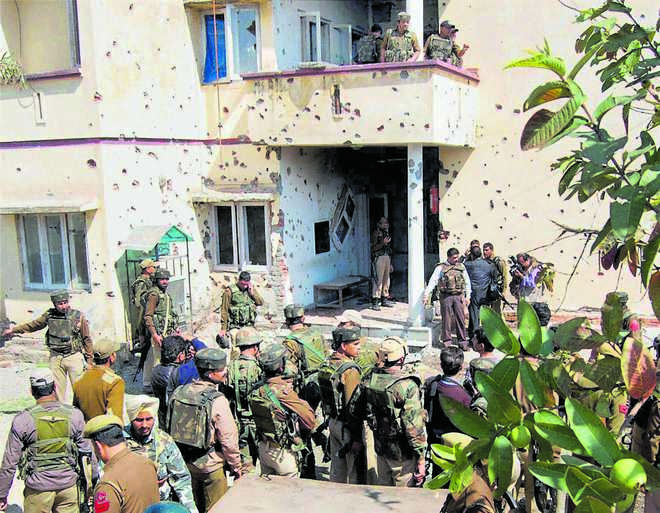 Sub-conventional conlict: Security personnel after an encounter with militants, at Raj Bagh Police station in Jammu. Low-intensity conflict is peculiar to regions. PTI
Sub-conventional conlict: Security personnel after an encounter with militants, at Raj Bagh Police station in Jammu. Low-intensity conflict is peculiar to regions. PTIA recent media report revealed that a Jaish-e-Mohammad “suicide bomber” has been apprehended in Baramula in Jammu and Kashmir. In the 26 years of violence in Jammu and Kashmir, suicide bombing has been a rarity. I do recall that we had one or perhaps two attempts at suicide bombing at the Batwara gate of Badami Bagh Cantonment, Srinagar. In one such event in 2001, a young Kashmiri student studying abroad blew himself up in a Maruti 800 while attempting to ram the double-gate security system.There is much difference between a “suicide bomber” and a “suicide attacker”. Most people confuse the two and treat them as synonymous. A suicide bomber comes strapped with explosives or drives a vehicle laden with explosives to take on a specific target or a gathering and cause maximum casualties. The suicide attacker is one who is armed to the teeth, takes hostages but isn’t wired and geared to blow himself. He targets individuals and groups at random and is prepared to die in the response of the security forces (SF), without making any serious effort to escape. The regretful assassination of Rajiv Gandhi was a rare case of suicide bombing in India. The kind of security measures you need to take against threats of that kind can actually paralyse societies. Ask the Pakistanis, Afghans and Iraqis; no one knows better than them. India has been fortunate in this regard despite a clutch of internal security threats. It is the Improvised Explosive Device or IED which has been the usual weapon here, for many years.The IED was truly introduced as a military weapon in our context by the LTTE in Sri Lanka in 1987. Our troops used to the conventional anti-personal mines thought that we could use detection methods to unearth the IEDs and mines but the LTTE’s Johnny mine, was virtually non-detectable. The LTTE employed more IEDs than mines. Those were the days when remote control and mobile- initiated IEDs had not come into being. When I mentioned the role of IEDs in military operations at a talk to the US Marines in Hawaii in 2000, I received blank stares. Two years later, the Marines were battling IEDs in Afghanistan and then in Iraq. The Hollywood film Hurt Locker captured the threat of IEDs most graphically. The US came up with various counter-IED concepts but could never achieve supremacy over the car bomb in particular.India has been free from car bombs quite unlike our neighbours, Pakistan and to an extent even Sri Lanka. There is hardly a counter measure available against them and methods of prior detection or controlled detonation haven’t fully succeeded. The last time a major car-bomb incident took place was in 2004, when an Army bus was targeted by terrorists near Pattan using a Maruti wired and laden with explosives. It only killed the driver. Another attempt at Udhampur in 2011 did not succeed. The last time a major IED was successfully detonated in Kashmir was on July 20, 2008, on the Srinagar-Baramula highway. Nine brave Army soldiers travelling home were killed. Does seven years of absence of such terror activity indicate a transformation of conflict?Conflict undergoes transformation for various reasons. Among them is the availability of resources, both human and material. Good intelligence ensured targeting of “IED doctors” who are essential for the fabrication of IEDs. There is no dearth of explosive available within Kashmir, mostly for quarrying and none of it is under security control; detonators are also available but it was the cleaning out of IED doctors which did the trick. IEDs in Manipur still appear to be more frequent, particularly on rural roads but in Naxal areas the frequency is even higher.One of the ways of preventing IED attacks is to minimise movement. The security forces in Naxal areas need to open roads just once or maximum twice a month with all light logistics maintenance being done by helicopters. This was the model the Indian Army adopted in Sri Lanka. It dramatically reduced IED incidents and, therefore, casualties. The CRPF badly needs aviation support which can enable this.Focusing on suicide attacks, often referred to as Fidayeen attacks, we can see that 1999-2003 was the period in Jammu and Kashmir when these were at the highest pitch. Very few locals were ever involved. These terrorists were sometimes death-row convicts from Pakistani jails and even a few HIV patients motivated for the afterlife. Against these, a high level of alert and physical security measures were required which forced out-of-proportion deployment. We have not seen too many of these type of attacks in the North-East or the Naxal areas, where it is usually ambushes on which insurgents depend.In 1999, almost in conjunction with the operations in Kargil, there was a sudden surge in these sneak suicide attacks against military garrisons. It was a phase immediately after the virtual drying up of the presence of foreign (other than Pakistani) terrorists in Jammu and Kashmir. The security forces had to expend much of their budgets to raise masonry walls and wire obstacles, besides establishing double gates and execution of domination of their perimeters. Suicide attacks of the 26/11 variety are similar operations on a larger scale. Attempts to infiltrate the Srinagar airport in November 2000 and the recent events at Pathankot are also examples at varying levels. In today’s environment, the vulnerability of North Punjab and the Jammu-Kathua sector is higher for such suicide attacks because of the ease of infiltration and availability of potential high-value targets in the vicinity of the border. Pakistan-based terror groups, backed by ISI, have a supply chain of potential suicide attackers and even bombers, psyched and motivated with religious fervour. Currently in Kashmir it isn’t easy to carry out such attacks, unless it is by home- grown renegades. Despite the influence of radical Islam and the antipathy of the Kashmiri youth towards everything Indian, a positive that remains is that radical religious fervour has not travelled the full distance. It is existent, yet is different from the Taliban, TTP or Daesh variety. Which is why, the hope holds out that given suitable psychological conditioning and a positive outreach the situation can still be recovered. The recently experienced tactics of mob-based obstruction of Army and Police at encounter sites in Kashmir is considered by some as virtual suicide tactics. This is rare in the sheer volume of turnout but not something unseen in other areas where there is low-intensity conflict. It is a dangerous trend which is emboldening resistance, just as stone throwing did in 2008-10. The intent of separatists here is to showcase the David-and-Goliath effect to the Rights’ community; picked up from Palestinian Intifada but taken beyond. Sub-conventional violence is a subset of hybrid and asymmetric warfare. It is peculiar to regions and communities and the dynamics need detailed study by security experts and psychologists to determine counter-narratives which will work against them. There is no all-in-one formula to counter such violence, least of all the use of unbridled counter-violence, especially after stabilisation

The writer, a former General Officer Commanding of the Srinagar-based 15 Corps, is now a Fellow with the Delhi Policy Group.






















































